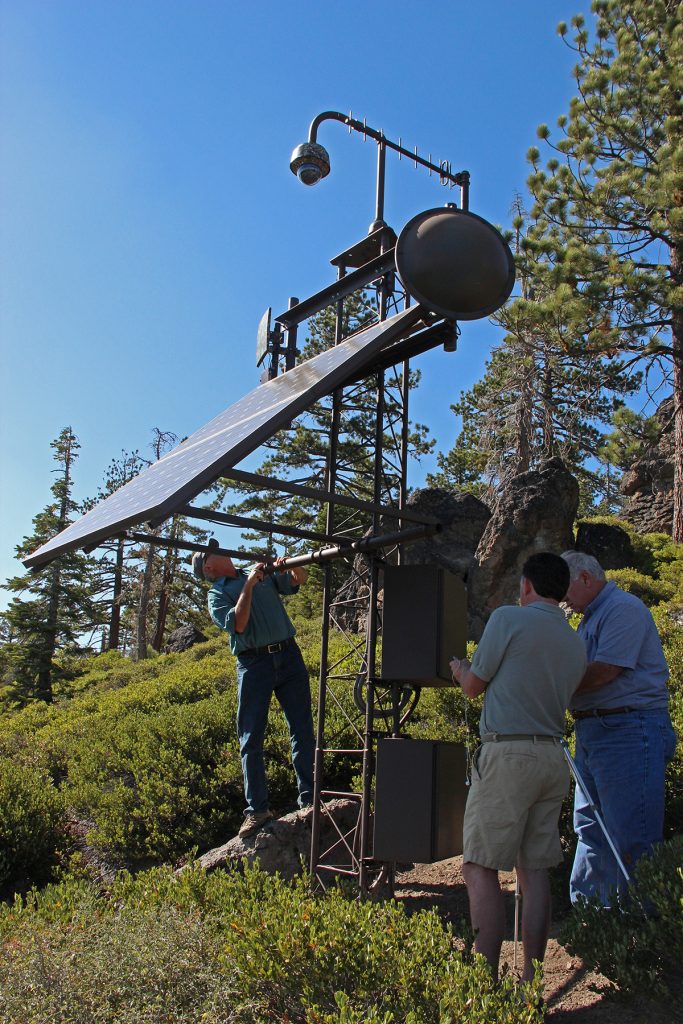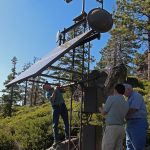
The University of Nevada, Reno is one of six universities working with the U.S.Geological Survey to transition their ShakeAlert earthquake early warning system into a production system that would give communities a precious few seconds to take protective actions before severe shaking waves from an earthquake arrive.
The USGS announced Monday the $3.7 million award to the universities for this latest collaboration to improve the ShakeAlert system’s sensor and telemetry infrastructure across the west coast of the United States.
“Our seismic network covers Nevada, and California along the eastern Sierra Nevada and Death Valley,” Graham Kent, director of the Nevada Seismological Laboratory, said. “We have an unmatched microwave, IP-based communications system that powers our multi-hazard seismic, fire and extreme-weather network. Integrating the earthquake early warning system into our network makes sense, and through this collaboration our partners can better understand the benefits of our communications system as we all work to improve the ShakeAlert program throughout the West.”
The Nevada Seismological Lab, a public service department at the University of Nevada, Reno, will initially focus on the California portion of their seismic monitoring system near Lake Tahoe and looks to expand the early warning system into Nevada, mostly surrounding the urban areas of Las Vegas in the south of the state and, in the north, Reno and Carson City. The eastward expansion into Nevada will require help from both our congressional delegation and at the state level as seen in California, Oregon and Washington.
“As the third most seismically active state in the U.S., Nevada has its share of earthquakes but has not had a large earthquake since 1954. In that year alone, Nevada experienced four large earthquakes: M6.6, M6.8, M6.8 and M7.1,” Kent said. “In Las Vegas, an early warning system could potentially give residents 45 to 60-plus seconds of response time in a damaging earthquake that could originate in Death Valley. In the north it might be as much as 10 to 20 seconds – still valuable time to take protective actions.”

Through cooperative agreements, the USGS has brought together the California Institute of Technology; Central Washington University; University of California, Berkeley; University of Oregon; University of Washington and University of Nevada, Reno for the ShakeAlert program. ShakeAlert is a new product of the USGS Advanced National Seismic System, a federation of national and regional earthquake monitoring networks throughout the country, including networks in southern California, northern California and the Pacific Northwest.
In addition to the University awards, the USGS has purchased about $1.5 million in new sensor equipment, some of it destined for the Tahoe-Truckee corridor, to expand and improve the ShakeAlert system and awarded about $250,000 in supplements to earlier agreements to three universities. These efforts, as well as internal work that the USGS is conducting, are possible because of $8.2 million in funding to the USGS Earthquake Hazards Program for ShakeAlert approved by Congress earlier this year.

At a White House Earthquake Resilience Summit in February, it was announced that the ShakeAlert system had developed to a stage that was ready to support limited test uses in some areas of California. This next-generation production prototype allows selected users to develop and deploy pilot implementations that take protective actions based on the USGS ShakeAlert warnings in areas with sufficient station coverage.
“The Summit focused on California, Washington and Oregon, who have a game plan to make it happen and $8.2 million of new federal monies to begin implementation of a production prototype earthquake early warning system,” Kent said. “The Summit also identified Nevada, Alaska and Utah – all with high seismic hazards – as areas that would benefit from being prepared and implementing early-warning earthquake systems.”
The panel included U.S. Secretary of the Interior Sally Jewell, White House Office of Science and Technology Policy Director John Holdren, U.S. Geological Survey Director Suzette Kimball, National Institute of Standards and Technology Director Willie May and other federal agency staff, state government representatives and stakeholders.
